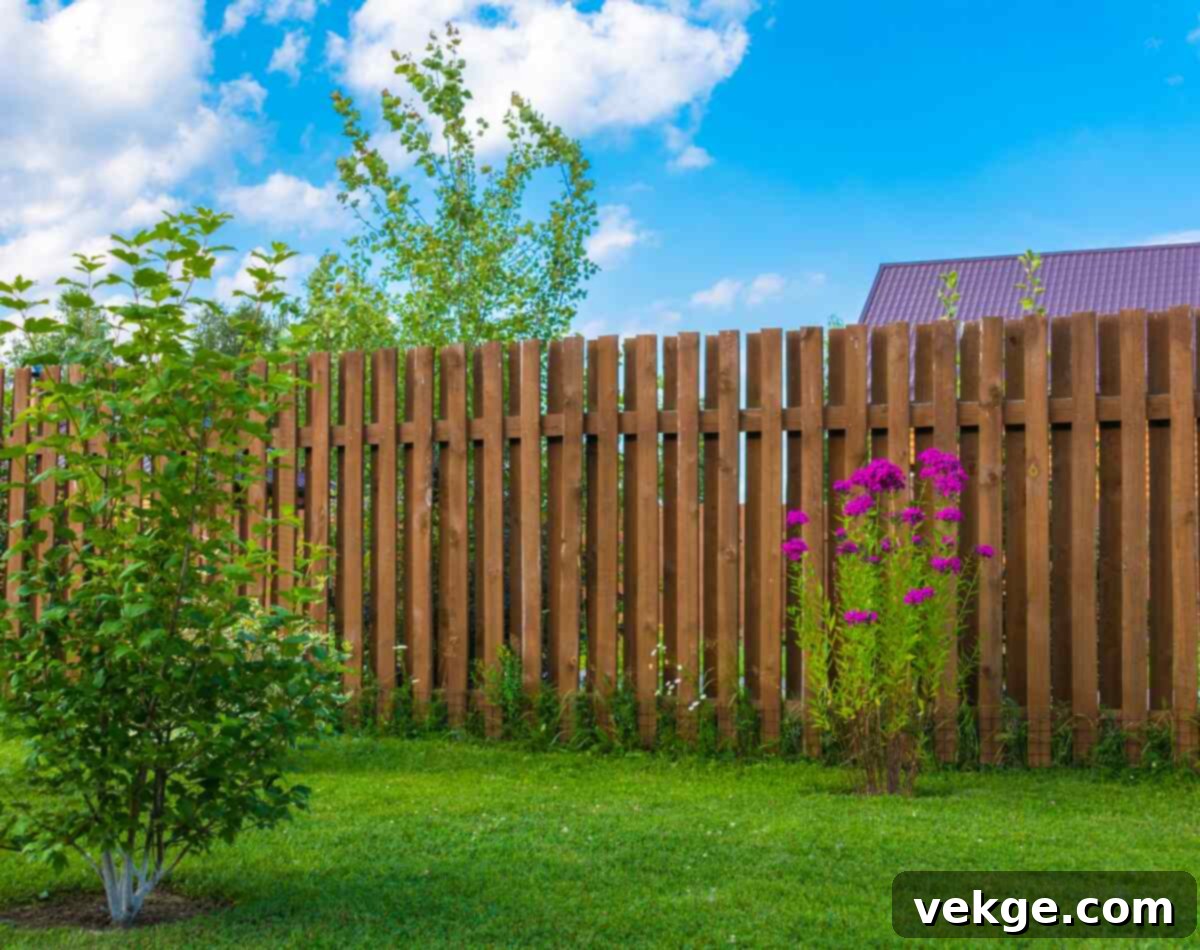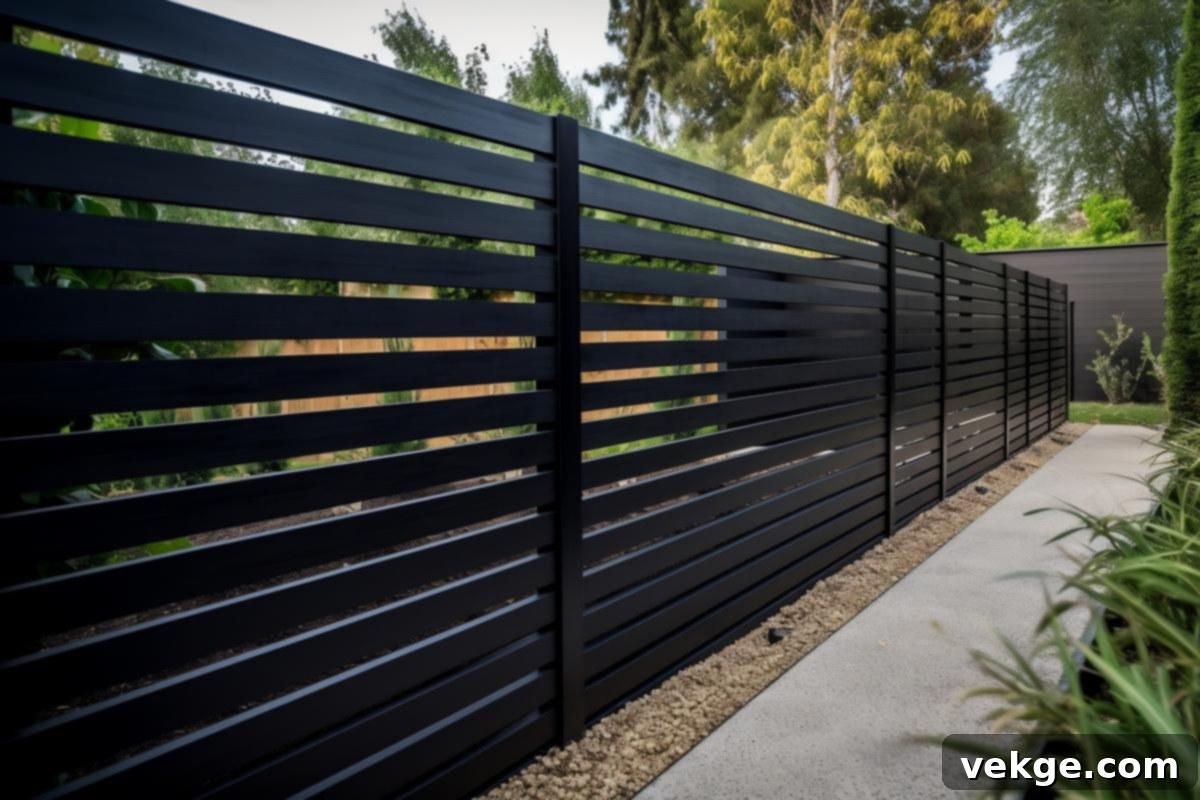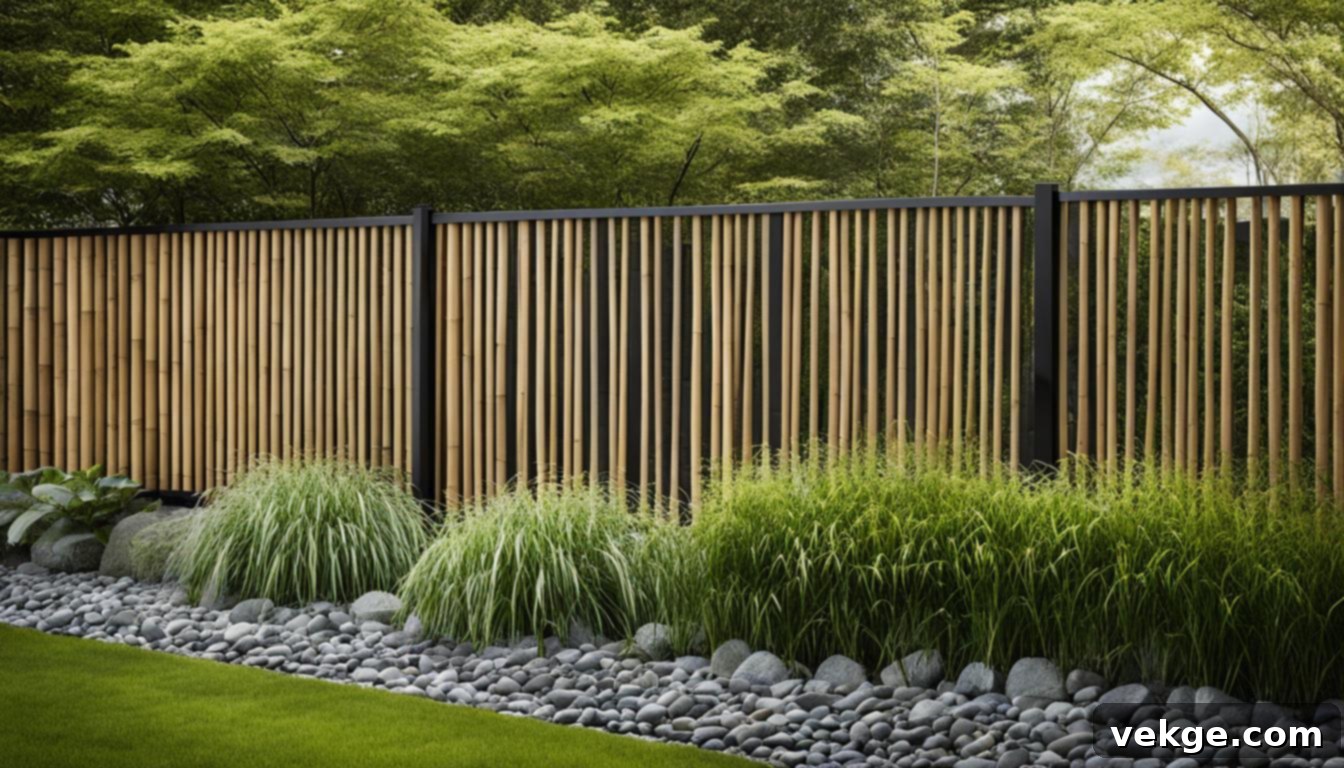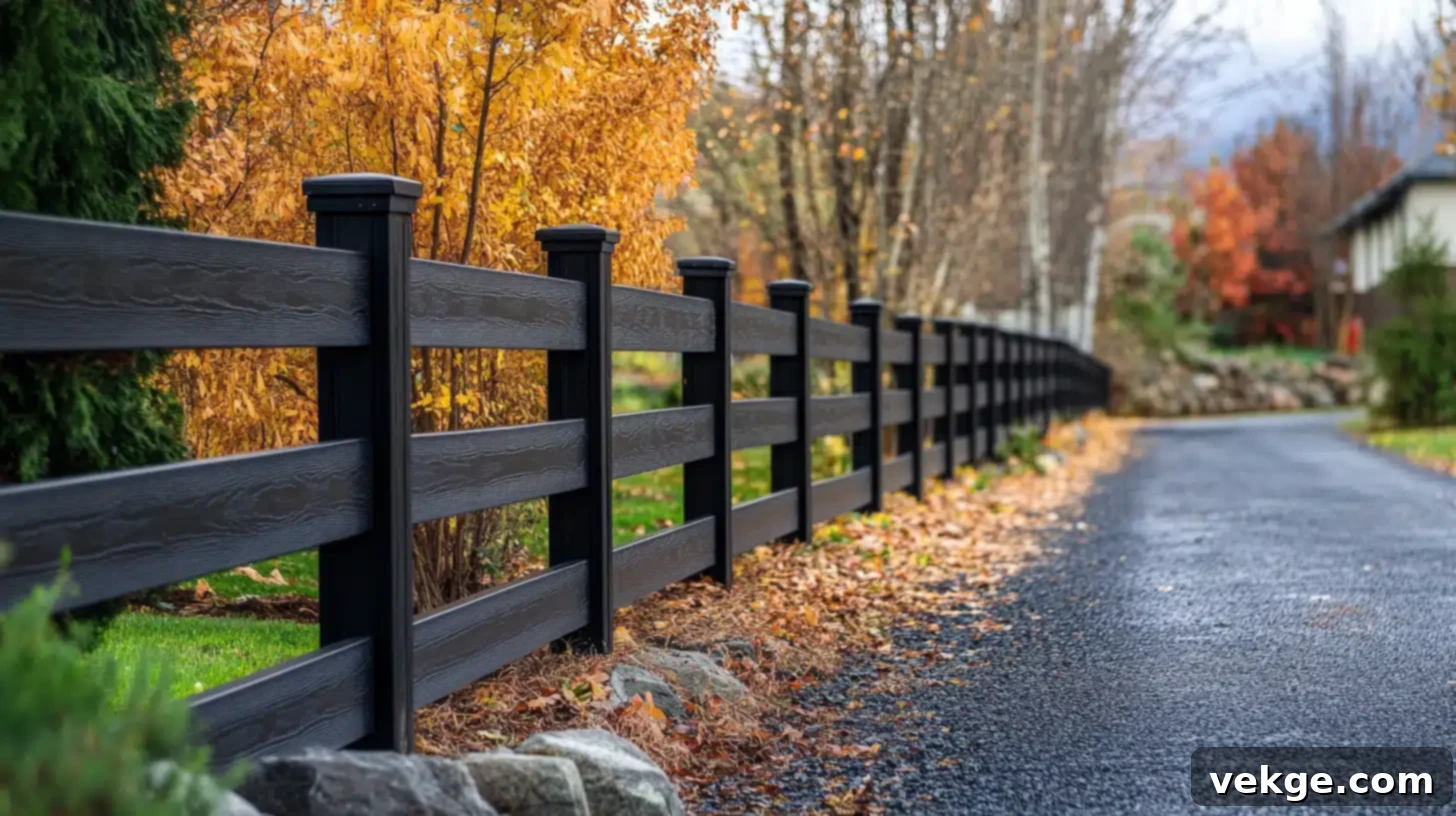Sustainable Boundaries: A Comprehensive Guide to Eco-Friendly Fencing Options
Creating a beautiful, private outdoor space brings immense satisfaction. It’s a personal haven where you can relax, entertain, and reconnect with nature. As our collective awareness of environmental impact grows, it’s only natural to question how our home improvement choices, including fencing, align with our planet-friendly values. The good news is that choosing eco-friendly fencing options no longer means compromising on aesthetics, durability, or functionality.
Today’s market offers a diverse array of stunning fences crafted from sustainable, recycled, or reclaimed materials. Whether your vision includes a classic wooden picket fence, a sleek modern composite design, a vibrant living wall of lush greenery, or robust metal barriers, you have more planet-conscious choices than ever before. This guide will explore the benefits of sustainable fencing, highlight key material characteristics, and delve into various innovative options to help you build a greener boundary for your property.
Why Eco-Friendly Fencing Matters for a Sustainable Future

The environmental footprint of traditional fencing materials can be substantial. For example, a conventional wood fence might rely on lumber harvested from unsustainable sources, often requiring chemical treatments to prevent rot and pests. These chemicals can leach into the soil, potentially harming local ecosystems, contaminating groundwater, and posing risks to wildlife. Furthermore, the extensive deforestation associated with conventional timber harvesting contributes to habitat loss and climate change.
Materials like vinyl, while durable, are petroleum-based and non-biodegradable, meaning they persist in landfills for centuries. Their production processes, transportation across long distances, and eventual disposal contribute significantly to carbon emissions and waste accumulation. By consciously opting for sustainable fencing materials, homeowners can play a crucial role in minimizing their impact, conserving precious natural resources, reducing landfill waste, and lowering overall carbon emissions. It’s a tangible step towards fostering a healthier planet.
Key Characteristics of Truly Eco-Friendly Fencing Materials
When evaluating different fencing solutions, consider the following attributes that define an environmentally conscious choice:
- Recycled Content: Fencing made from recycled materials — whether it’s plastic, metal, or reclaimed wood — dramatically reduces the demand for virgin resources. This approach gives existing materials a valuable second life, diverting waste from landfills and lessening the energy required for new production.
- Sustainability & Renewability: Prioritize materials sourced from renewable resources that replenish quickly. Bamboo, for instance, is renowned for its incredibly rapid growth rate, making it a far more sustainable option than slow-growing hardwoods. Look for certifications that indicate responsible forestry practices for wood products.
- Durability & Longevity: A truly eco-friendly fence is one that lasts. Choosing a highly durable material means you won’t need to replace your fence frequently, thereby saving resources, reducing waste, and minimizing the environmental impact associated with manufacturing and installation over the long term.
- Local Sourcing: Opting for locally sourced materials significantly cuts down on transportation emissions, reducing the carbon footprint associated with bringing the product to your home. This practice often supports local businesses, strengthens regional economies, and can sometimes lead to more customized solutions.
- Low Maintenance: Materials that require minimal painting, staining, or chemical treatments throughout their lifespan are more environmentally friendly. Reduced maintenance means fewer harmful chemicals are used and less energy is expended over the years.
- Biodegradability or Recyclability at End-of-Life: Consider what happens when the fence reaches the end of its functional life. Can it be recycled, composted, or safely returned to the earth without leaving behind toxic residues? This “cradle-to-grave” perspective is vital for true sustainability.
Beyond Traditional Wood: Exploring Diverse Eco-Friendly Fencing Solutions

While traditional wood fencing offers classic beauty, its sustainability largely depends on responsible sourcing. Let’s delve into a variety of popular and innovative eco-conscious alternatives that offer both style and a minimal environmental footprint.
1. Recycled Composite Fencing: Durability Meets Sustainability
Composite fencing has revolutionized the industry, and for excellent reasons. Typically manufactured from a blend of recycled plastic and wood fibers, these fences are remarkably robust and low-maintenance. The plastic content provides exceptional resistance to moisture, rot, insects, and splintering, eliminating the need for frequent painting or staining. This translates into fewer chemicals used and less ongoing effort for homeowners.
While the initial production of composite lumber can be energy-intensive, many high-quality composite materials are designed to be recycled at the end of their exceptionally long lifespan, contributing to a circular economy. When selecting composite, inquire about the percentage of recycled content and ensure the manufacturer adheres to sustainable production practices.
2. Bamboo Fencing: The Rapidly Renewable Powerhouse
Celebrated for its incredible strength, remarkably fast growth (some varieties can grow several feet in a single day!), and distinctive natural beauty, bamboo offers a unique and highly sustainable fencing aesthetic. Though often mistaken for wood, bamboo is technically a grass. Its hollow, yet incredibly strong culms make it a lightweight yet sturdy option that can withstand various climates when properly treated and maintained. Bamboo fences provide a tropical or modern organic feel and can be installed as panels, rolls, or individual poles for varying levels of privacy and design.
3. Metal Fencing: Elegant, Durable, and Recyclable
Steel and aluminum fences present elegant, long-lasting, and highly sustainable alternatives to traditional materials. A significant environmental benefit of metal fences is their high recycled content; both steel and aluminum are among the most recycled materials globally. Furthermore, they can be recycled repeatedly without significant loss of quality, making them a truly circular material.
Metal fences are exceptionally durable, resistant to rot, pests, and fire, and require minimal maintenance beyond occasional cleaning. They offer excellent security and visibility, making them suitable for a range of applications from modern minimalist designs to classic wrought iron aesthetics.
4. Living Fences: Nature’s Own Boundary
Imagine a fence that actively contributes to the environment – a vibrant, living wall of greenery that provides privacy, beauty, and a crucial habitat for local wildlife and pollinators. This is the inherent charm and benefit of living fences. Hedges, rows of carefully chosen trees, or climbing vines create stunning, natural boundaries that also help purify the air, reduce noise pollution, and cool your property.
While they require a commitment to regular watering, pruning, and care, living fences offer unparalleled ecological benefits. Consider native plant species that thrive in your local climate to minimize water usage and maximize biodiversity support. They are an investment in time but yield tremendous environmental and aesthetic rewards.
5. Reclaimed Wood Fencing: History and Sustainability Combined
For those who adore the timeless appeal of wood, reclaimed wood offers an exceptionally sustainable option. Sourced from old barns, factories, decks, or even riverbeds, reclaimed wood is given a new life, preventing it from ending up in landfills. Each piece often carries a unique history, character, and weathered beauty that cannot be replicated with new lumber.
Beyond its aesthetic charm, using reclaimed wood significantly reduces the demand for newly harvested timber, conserves forest resources, and eliminates the environmental impact of new wood processing. Ensure the reclaimed wood is inspected for structural integrity and treated naturally if needed to ensure longevity.
6. Recycled Plastic Fencing: Maintenance-Free and Long-Lasting
Recycled plastic fencing, often made from post-consumer waste like milk jugs and detergent bottles, is an incredibly low-maintenance and highly durable eco-friendly choice. It’s impervious to rot, insects, moisture, and fading, meaning it will never need painting, staining, or sealing. This drastically cuts down on the environmental impact associated with chemical treatments and replacements.
While some find its aesthetic less traditional, recycled plastic fencing is available in various colors and styles, often mimicking the look of wood. It’s particularly well-suited for areas where moisture is a concern, such as near pools or in damp climates, and offers an exceptionally long lifespan, making it a wise long-term investment.
Making the Right Choice: Factors for Selecting Your Eco-Friendly Fence
Navigating the options for sustainable fencing requires considering several practical factors to ensure you make the best decision for your home and lifestyle:
-
Budget Considerations: Upfront vs. Long-Term Value
Some eco-friendly materials, like recycled composite or high-quality metal, might have a higher upfront cost compared to basic pressure-treated wood. However, it’s crucial to look beyond the initial price tag. Their exceptional durability, minimal maintenance requirements, and extended lifespan often lead to significant long-term savings by reducing replacement costs and ongoing care expenses. Calculate the total cost of ownership over 10-20 years, not just the purchase price.
-
Maintenance Requirements: How Much Effort Are You Willing to Invest?
Your comfort level with upkeep is a key factor. Options like recycled plastic and composite fencing are virtually maintenance-free, requiring only occasional cleaning. Metal fences are similarly low-maintenance. Living fences, while beautiful, demand regular watering, pruning, and care. Bamboo and reclaimed wood may require specific treatments or sealants depending on your climate. Be honest about the time and effort you’re prepared to commit.
-
Climate Suitability: Matching Materials to Your Environment
Certain eco-friendly fencing materials perform better in specific climates. For instance, recycled plastic and metal excel in wet or humid environments where wood would quickly rot. Bamboo needs proper treatment to prevent moisture damage in very damp areas. Consider your local weather patterns – extreme heat, heavy rain, strong winds, or freezing temperatures – and choose a material known to withstand these conditions for optimal longevity and performance.
-
Aesthetics and Style: Harmonizing with Your Home’s Design
Your fence should complement your home’s architectural style and your personal landscape design. Do you prefer a rustic, natural look that reclaimed wood or natural bamboo offers? Or perhaps a sleek, modern aesthetic best achieved with metal or composite? Living fences provide an organic, dynamic beauty. The right material can significantly enhance your property’s curb appeal and create a cohesive outdoor living space.
-
Privacy and Security Needs: Functionality First
Beyond aesthetics, what primary functions does your fence need to serve? If privacy is paramount, solid panels of composite, tightly woven bamboo, or dense living hedges would be ideal. For security, sturdy metal or robust composite fences are excellent choices. Consider the height and opacity required to meet your specific needs while adhering to local zoning regulations.
Installation and Lifespan: Maximizing Your Eco-Friendly Investment
The journey to a truly sustainable fence extends beyond material selection to its installation and expected lifespan. Opt for installers who prioritize eco-conscious practices, such as minimizing site disruption, responsibly disposing of old materials, and potentially using eco-friendly fasteners or sealants. A professionally installed fence will perform better and last longer, maximizing its environmental benefits by extending its service life.
Furthermore, research the manufacturer’s warranties and expected lifespan of your chosen material. An eco-friendly fence that needs frequent repairs or early replacement undermines its sustainability. Investing in quality materials and expert installation ensures your fence remains a durable, beautiful, and green boundary for decades to come.
Embracing a Greener Future: The Impact of Your Fencing Choice

Selecting the ideal fence for your outdoor space is far more than a simple aesthetic decision—it’s a reflection of your values and your commitment to a healthier, more sustainable planet. As global awareness of environmental issues grows, so too does our access to an incredible array of innovative, eco-friendly materials and thoughtful designs that cater to every taste and budget.
Remember, even seemingly small steps, like making mindful choices about your fencing, collectively make a significant difference in minimizing our overall environmental impact. The excellent news is that you absolutely can have a gorgeous, sturdy, and reliable fence without compromising your ecological principles. Sustainable, green home improvement options are widely available and increasingly affordable.
With careful planning, a bit of research into the latest materials, and an openness to exploring innovative solutions, we can all create outdoor havens that not only enhance our homes but also actively contribute to the well-being of the planet we cherish. Make the conscious choice to go green and build a fence that stands for both beauty and sustainability.
